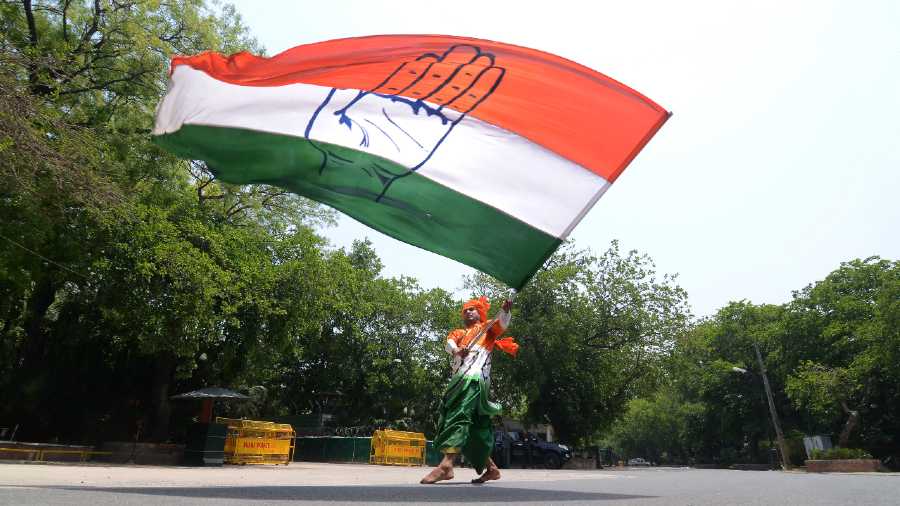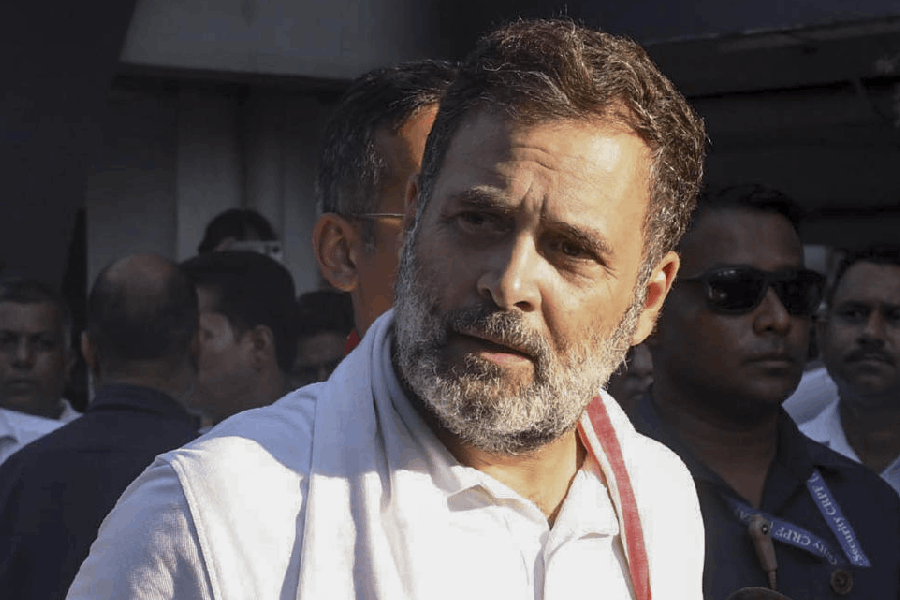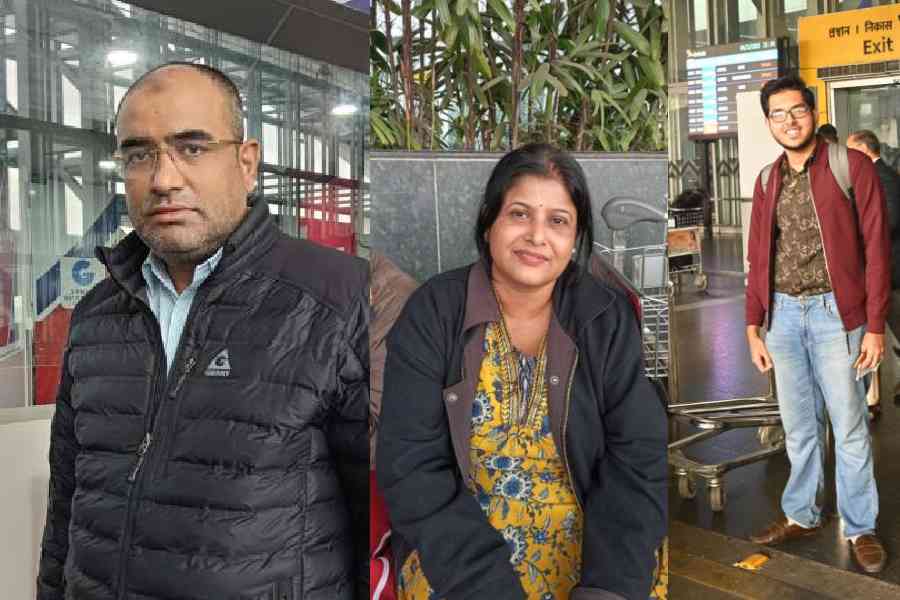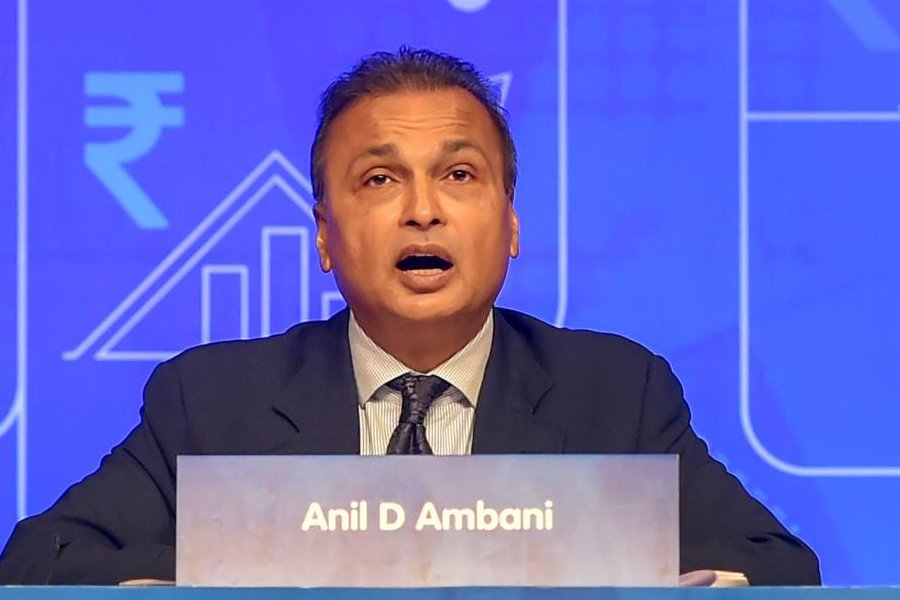Many Congress leaders, including former ministers, parliamentarians and the younger lot, are agitated about the invitee list for the Udaipur Chintan Shivir (brainstorming session), wondering why prominence was being given to office-bearers who are already part of the system.
The resentment runs so deep that many of them are describing the May 13-15 session as an exercise to prevent new ideas and thinking from reaching the top leadership.
“The AICC office-bearers are invited — the same people who are responsible for the miserable state of affairs and whose ideas and capabilities are known to Sonia Gandhi and Rahul Gandhi,” a leader who hasn’t participated in any such session despite spending 30 years in the party told The Telegraph.
Among the 400 invitees are also the members of Parliament, who too get to interact with the top leadership regularly, apart from the Pradesh Congress Committee presidents and Congress Legislature Party chiefs.
Questions about criteria crop up before every brainstorming session and the Congress has always reached out to leaders who are not part of the system. While around 50 participants at the 2003 Shimla session were picked from across the states although they didn’t fit into any category, youth leaders were given preference at the 2013 Jaipur meet.
A Congress general secretary told this newspaper: “Even this time, it has been left to the Congress president to select leaders from outside the fixed categories. There are bound to be 50-60 leaders who will attend the Chintan Shivir even though they are not office-bearers or MPs.”
Unlike in the past, this has not been publicised, causing unrest among the party rank and file who are recalling that Rahul had said at the Jaipur meet that the party should open the doors to people who don’t hold any positions.
While sections of senior leaders are angry because they are not on the list despite their experience and positions they held in the past, younger leaders believe at least 50 per cent of the participants should have been new, from outside the system.
“We should have excluded the usual suspects and picked unknown leaders from the grassroots or from among the hundreds of struggling faces who have shown spark. Those who are tried and tested and brought the party to this miserable plight are still being pampered,” a former AICC secretary said.
Another leader said: “What new do you expect from these people who are already running the party? Most of them have been an integral part of the high command structure for three-four decades. If they had brilliant ideas, they would have implemented them by now. Will Kanhaiya Kumar and Jignesh Mevani not be there because they don’t hold any office? There are five-six very important leaders in every state who aren’t office-bearers currently. Why should they be kept out?”
Although the party has formed six committees to prepare background papers for discussions on different subjects — political, social justice and empowerment, economy, organisation, agriculture, youth and empowerment — the dominant view in the party is that the leadership crisis should have been addressed before theorising on these subjects because what is lacking is action on the ground.
A leader who is part of one of these committees said: “The Congress doesn’t face any intellectual crisis; not at all, particularly when compared to the RSS-BJP. Our ideological positions are clear. The need is to spread out in the field and clearly articulate our positions.”
The leadership itself appears to be conscious of this fact as most of these committees have barely met to discuss the background papers. While some committees did meet once, others fulfilled the formality through videoconference. Members don’t even know who is preparing the draft. This lack of interest is caused by the realisation that leadership indeed is the main crisis after Rahul relinquished the post of Congress president in 2019.
The Udaipur session is unique in many aspects; while the message from Shimla was a national coalition under the leadership of Sonia, Jaipur was an attempt to build Rahul’s leadership against the strong anti-incumbency faced by the then UPA government. The Udaipur session is taking place at a time when the party appears clueless about the road to revival; coalitions have failed to derail the Narendra Modi juggernaut and the Congress leadership crisis lingers.
Even the adverse economic and social circumstances have failed to hurt the BJP’s electoral prospects, as was manifested in the last round of Assembly elections. Congress leaders know the session will serve its purpose if the leadership manages to send a positive message to the demoralised workers and establish its intent to regroup and fight.










